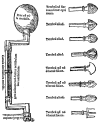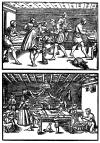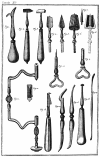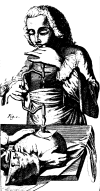Craniotomy through the ages
Figures








Similar articles
-
[Birth and development of otorhinolaryngology in the history of medicine].Acta Otorhinolaryngol Belg. 1981;35 Suppl 4:1045-622 contd. Acta Otorhinolaryngol Belg. 1981. PMID: 7046339 French. No abstract available.
-
[Birth and development of otorhinolaryngology in the history of medicine].Acta Otorhinolaryngol Belg. 1981;35 Suppl 2:1-392. Acta Otorhinolaryngol Belg. 1981. PMID: 7025562 French. No abstract available.
-
[Birth and development of otorhinolaryngology in the history of medicine (continued)].Acta Otorhinolaryngol Belg. 1981;35(Suppl 3):393-1044. Acta Otorhinolaryngol Belg. 1981. PMID: 7030004 French. No abstract available.
-
Eighteen hundred years of controversy: the paranasal sinuses.Am J Anat. 1969 Feb;124(2):135-47. doi: 10.1002/aja.1001240202. Am J Anat. 1969. PMID: 4886838 Review. No abstract available.
-
[Features and trends in the development of parasitology].Zhongguo Ji Sheng Chong Xue Yu Ji Sheng Chong Bing Za Zhi. 2005 Oct 30;23(5 Suppl):349-54. Zhongguo Ji Sheng Chong Xue Yu Ji Sheng Chong Bing Za Zhi. 2005. PMID: 16562467 Review. Chinese. No abstract available.
Cited by
-
Do We Need an ICU for All Elective Postcraniotomy Patients? A Critical Appraisal.Crit Care Med. 2022 Sep 1;50(9):1408-1411. doi: 10.1097/CCM.0000000000005609. Epub 2022 Aug 15. Crit Care Med. 2022. PMID: 35984057 Free PMC article. No abstract available.
-
An Illustrative Review of Common Modern Craniotomies.J Clin Imaging Sci. 2020 Dec 10;10:81. doi: 10.25259/JCIS_176_2020. eCollection 2020. J Clin Imaging Sci. 2020. PMID: 33408956 Free PMC article. Review.
-
The History of Decompressive Craniectomy in Traumatic Brain Injury.Front Neurol. 2019 May 8;10:458. doi: 10.3389/fneur.2019.00458. eCollection 2019. Front Neurol. 2019. PMID: 31133965 Free PMC article. Review.
-
Technical note: Orbitozygomatic craniotomy using an ultrasonic osteotome for precise osteotomies.Clin Neurol Neurosurg. 2015 Jul;134:24-7. doi: 10.1016/j.clineuro.2015.04.005. Epub 2015 Apr 13. Clin Neurol Neurosurg. 2015. PMID: 25935127 Free PMC article.
-
Cerebral Edema in Traumatic Brain Injury: a Historical Framework for Current Therapy.Curr Treat Options Neurol. 2020 Mar;22(3):9. doi: 10.1007/s11940-020-0614-x. Epub 2020 Mar 3. Curr Treat Options Neurol. 2020. PMID: 34177248 Free PMC article.
References
-
- Sigerist HE. A History of Medicine. Oxford: University Press; 1951.
-
- Major RH. A History of Medicine. Trad. it. Firenze: Sansoni; 1959.
-
- Broca P. Sur la trépanation du crane et les amulettes craniennes à l’époque néolithique. Paris: Leroux; 1889.
-
- Championniere LJ. Les origines de la trépanation decompressive. Paris: Plon; 1912.
-
- Coury C. La médicine de l’Amerique Precolombienne. Paris: Dacosta; 1969.
Publication types
MeSH terms
LinkOut - more resources
Full Text Sources
